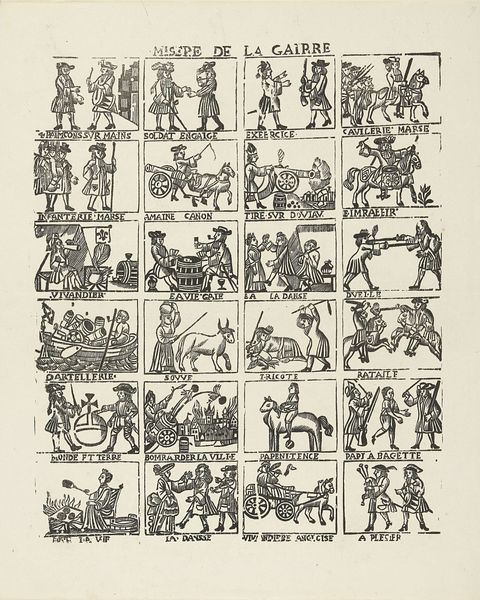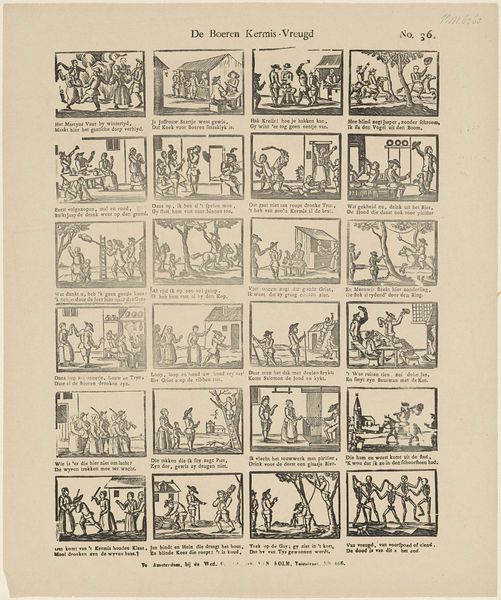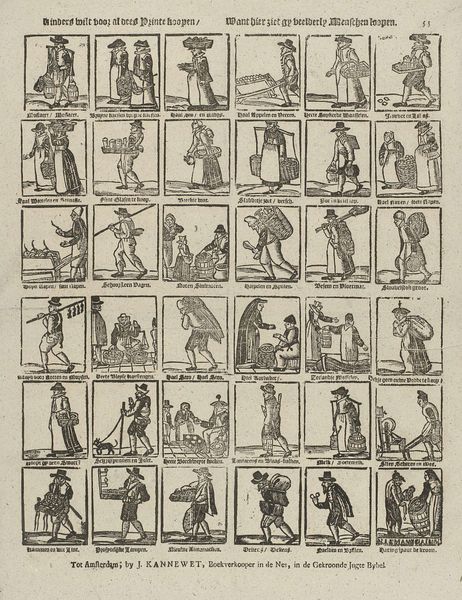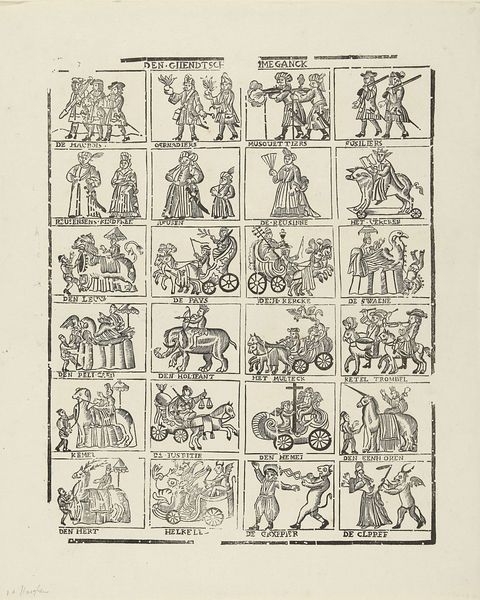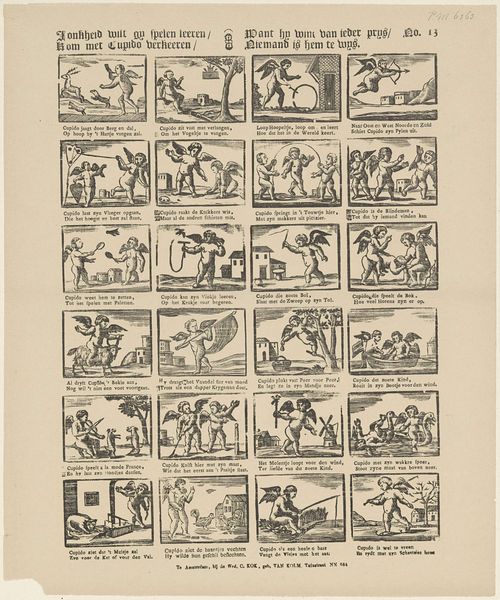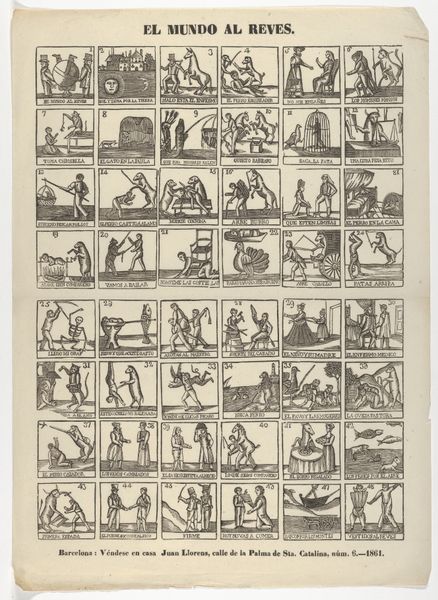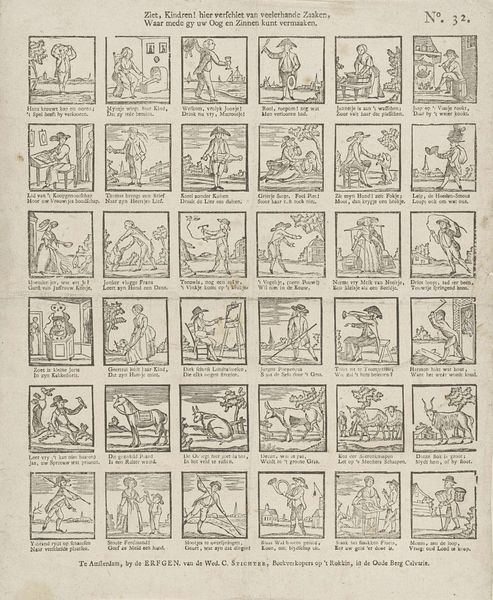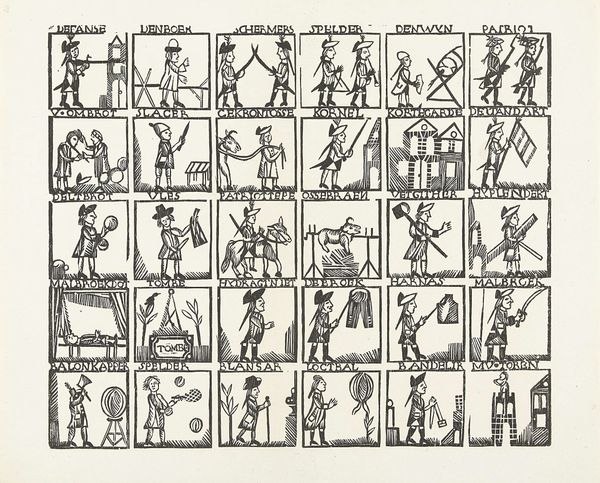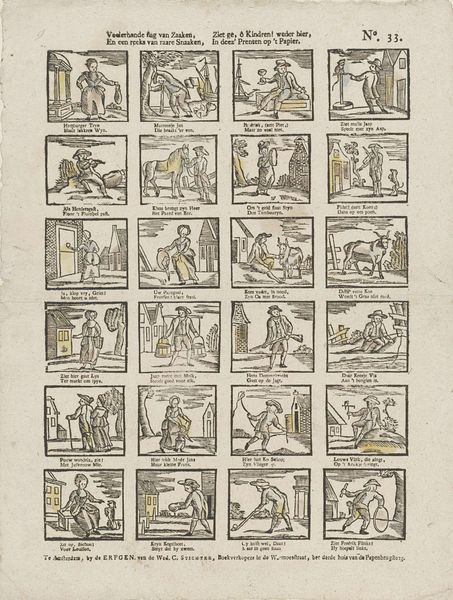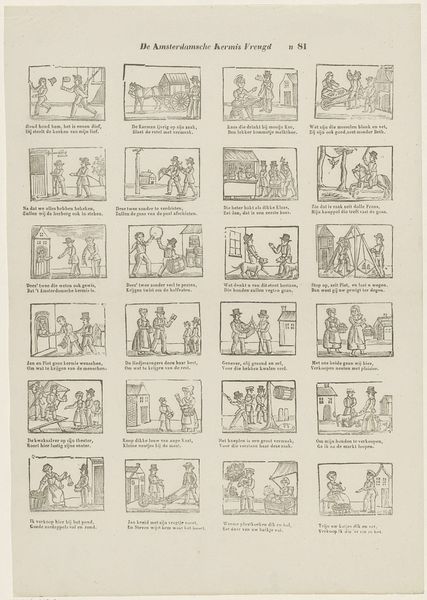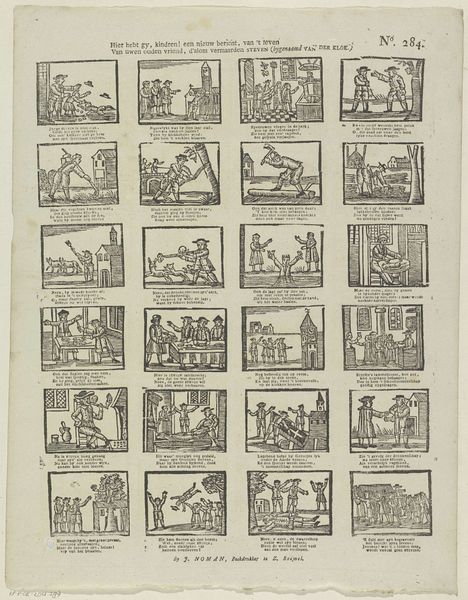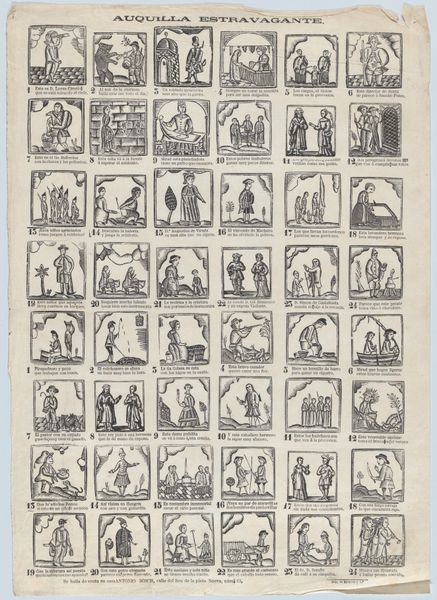
graphic-art, print, woodcut, engraving
#
graphic-art
#
medieval
#
narrative-art
# print
#
folk-art
#
woodcut
#
genre-painting
#
engraving
Dimensions: height 447 mm, width 363 mm
Copyright: Rijks Museum: Open Domain
Curator: At first glance, this image feels like a medieval tapestry woven with scenes of everyday life, but it's actually a print. The Rijksmuseum holds this graphic work entitled "De Boere-Kermis," and the artist is van der Haeghen, active sometime between 1700 and 1865. It seems to present various activities during a village fair. What strikes you initially about it? Editor: The sheer density! It’s like a visual encyclopedia of early modern peasant life. There's something quite fascinating about how each little scene is almost its own self-contained world, yet they all contribute to this larger tapestry of celebration. I notice the linear, somewhat rough quality—suggesting perhaps a woodcut technique? Curator: Precisely. Van der Haeghen uses either woodcut or engraving techniques here to depict each little scene of what the title indicates is a peasant festival. It makes one think of earlier medieval tapestries. There's the goose toss, dancing, archery contests… activities interwoven with communal feasting. I wonder how each of these events symbolizes deeper social bonds and even status. Editor: I agree. It feels highly symbolic. Take, for instance, the "werpendien Gans" scene—goose tossing. This can't be random. Could it be related to seasonal cycles, fertility rituals, or even a display of strength and prowess linked to virility and marriage prospects? I feel the scene is highly staged rather than incidental. Curator: Good observation! Such displays could act as a community validation of an individual’s place within society. Or, consider the depiction of people "dansen an vier"–dancing together, indicating cooperation and perhaps even courtship. Editor: I see several food related images such as “Eete Panne Koecken”, literally "eating pancakes”, all signs pointing towards excess before lent, or even harvest celebration. The whole fair embodies ritual, competition, community, food. I want to learn more about these small scenarios from van der Haeghen! Curator: This piece indeed acts as a snapshot of culture, allowing us glimpses into societal values, behaviors, and the overall psyche of people celebrating "De Boere-Kermis.” Each symbol and interaction is heavy with the weight of memory and the patterns of shared life. Editor: Absolutely. It reveals not just the actions but the socio-cultural landscape within which these actions become meaningful. Thank you for expanding my view beyond its attractive visual immediacy.
Comments
No comments
Be the first to comment and join the conversation on the ultimate creative platform.
